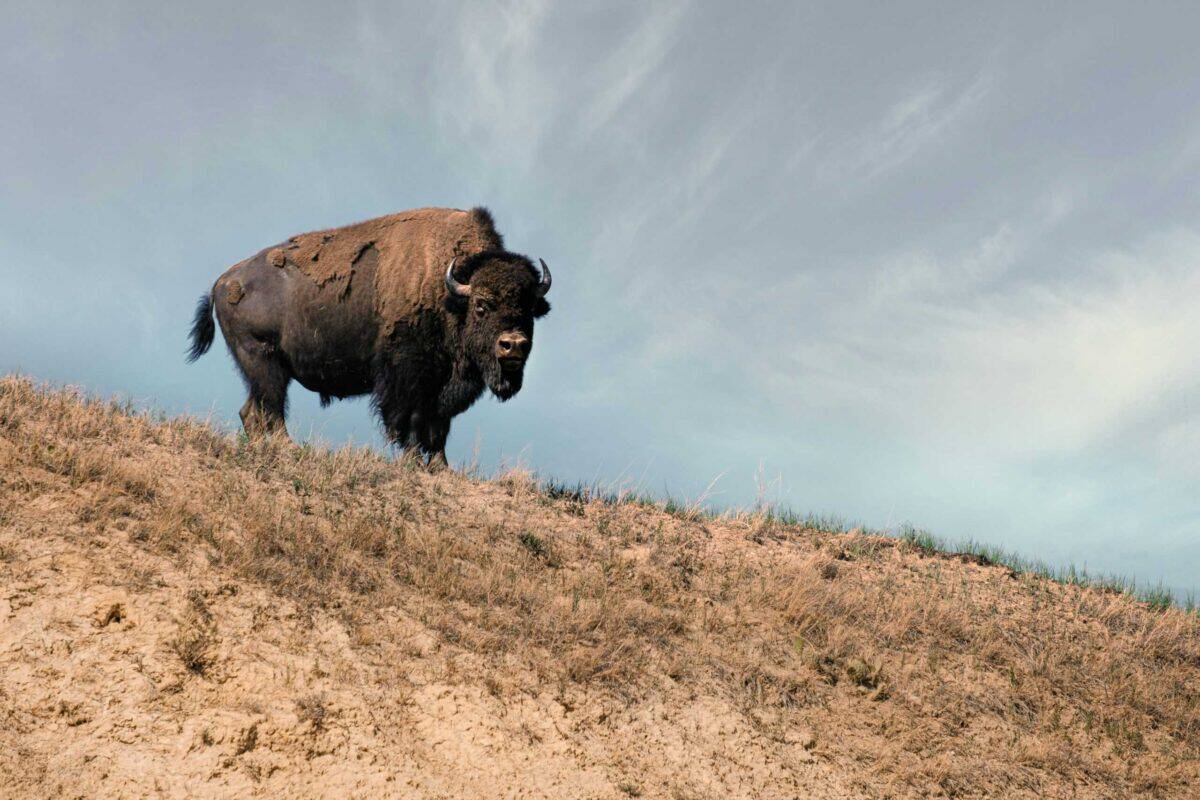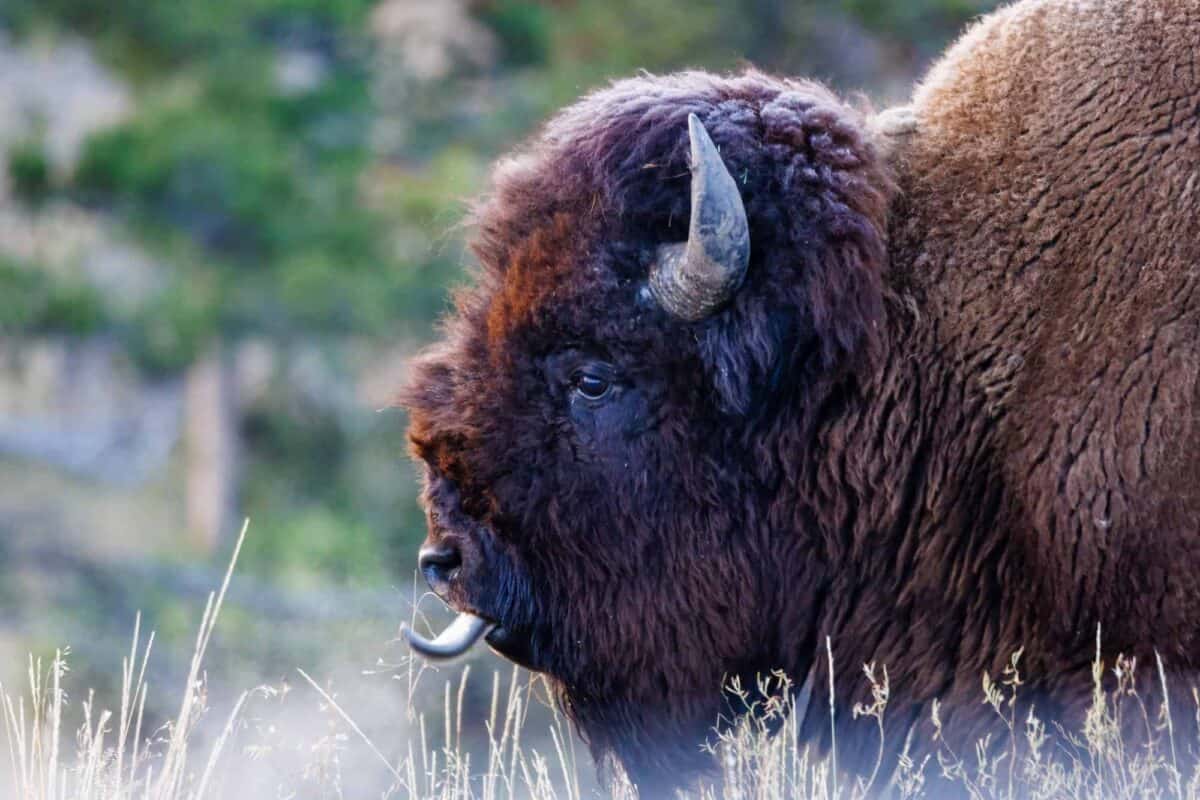Venturing into Yellowstone National Park is like stepping into a massive, living postcard filled with stunning landscapes and breathtaking wildlife. Among its most iconic residents is the American bison, a majestic creature whose presence offers visitors a profound connection to nature. However, as enchanting as they are, these powerful animals demand respect and distance. Understanding what happens when you encroach upon their space is crucial for both your safety and theirs.
Understanding the American Bison

Bison, sometimes called buffalo, are the largest terrestrial animals in North America. Adult males, or bulls, can weigh up to 2,000 pounds, while females, or cows, typically weigh around 1,000 pounds. Despite their imposing size, bison are surprisingly agile and can run up to 35 miles per hour. This combination of size, speed, and strength makes them both fascinating and formidable.
The Bison’s Role in Yellowstone

In Yellowstone, bison play a key role in the ecosystem. They graze on the vast meadows, maintaining the grasslands that support a multitude of other species. Their movements help aerate the soil, contributing to a healthy and balanced environment.
Behavioral Patterns of Bison

Bison are social animals that often travel in herds. These herds can range from small family groups to large congregations during migration seasons. They have a complex social structure and communicate through a range of vocalizations, postures, and movements.
The Importance of Keeping Your Distance

Bison may appear docile as they graze peacefully, but they are unpredictable and can become aggressive, particularly if they feel threatened. The National Park Service recommends staying at least 100 yards away from bison to minimize the chance of an encounter turning dangerous.
What Happens When You Get Too Close

When a person approaches too closely, a bison may perceive it as a threat. This proximity can trigger defensive behaviors, including charging. Bison charges are swift and unexpected, often leaving little time for a reaction. Serious injuries and even fatalities can occur as a result.
Signs a Bison is Agitated

It’s crucial to recognize when a bison is displaying signs of agitation. These include snorting, pawing the ground, flicking their tail up and down (rather than side to side), and raising their heads. These behaviors often precede a charge and should be taken as a clear warning to increase distance immediately.
Human Bison Interactions Over Time

Bison have a long history of interaction with humans, dating back centuries. Over the years, misunderstandings about their behavior have led to numerous dangerous encounters. Modern education efforts aim to reduce these interactions by informing park visitors of the risks associated with getting too close.
The Role of Park Rangers

Park rangers at Yellowstone work tirelessly to protect both visitors and bison. They provide crucial education about wildlife safety, help manage human-bison interactions, and monitor bison populations. Rangers are trained to intervene in situations where people are at risk of getting too close.
Impact on Wildlife and the Environment

When humans encroach upon bison territory, it not only poses a safety risk but can also disrupt the natural behavior and habitat of these animals. This disturbance can lead bison to alter their migratory patterns and feeding habits, which can have negative effects on the environment they help sustain.
Legal Implications of Harassing Bison

Approaching wildlife too closely in Yellowstone is not just dangerous; it is illegal. Harassment of animals in national parks can lead to hefty fines and other legal consequences. These laws are in place to protect both the animals and the visitors.
How to Enjoy Bison Safely

Observing bison from a safe distance can still be an incredibly rewarding experience. Use binoculars or a telephoto lens to get a closer look without encroaching on their space. This way, you can appreciate their majesty while ensuring your safety and theirs.
What to Do in Case of a Bison Encounter

If you find yourself too close to a bison, slowly back away without making sudden movements. Do not turn your back on the animal or run, as this can provoke a chase response. Instead, calmly create space and find a safe path to retreat.
Conclusion: Respect and Admiration from Afar

The bison of Yellowstone are a testament to the wild beauty and resilience of nature. By respecting these magnificent creatures and keeping a safe distance, visitors not only protect themselves but also contribute to the preservation of a vital species and ecosystem. Remember, the best way to admire Yellowstone’s bison is from afar, allowing them to roam free while you capture their beauty safely.
- What Actually Happens When You Get Too Close to a Yellowstone Bison - August 12, 2025
- 12 Cold Blooded Creatures That Rule Their Ecosystems - August 12, 2025
- Why Red Foxes Always Pounce Facing North - August 12, 2025

